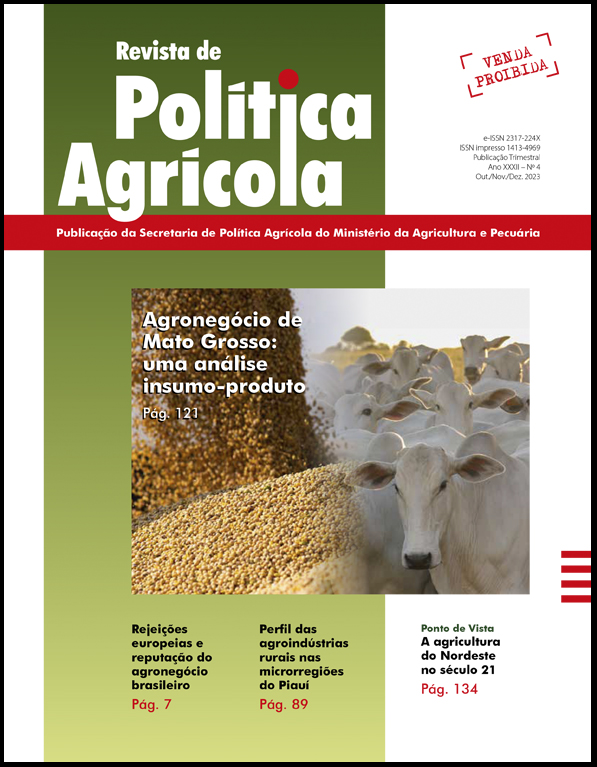Dominância na cadeia produtiva do leite em Goiás
Palavras-chave:
Economia agrícola, pecuária, séries temporais.Resumo
Apesar das evidências de que o setor lácteo brasileiro tende ao aumento da concentração da atividade produtiva, diferentemente de outros estados com destaque na produção nacional Goiás apresentou, entre 2006 e 2017, aumento do número de estabelecimentos rurais produtores de leite. Com o objetivo de investigar a presença de um elo dominante na cadeia produtiva do leite, em Goiás, que se beneficie do processo de transmissão assimétrica de preços (ATP), este estudo fez uma análise de ATP por meio dos modelos threshold autoregressive (TAR), momentum-TAR (MTAR), TAR consistente (CTAR), MTAR consistente (CMTAR) e asymmetric error correction models com thresholds. Assimetrias foram captadas apenas pelos modelos CTAR e CMTAR, o que indica que o método de Chan mostra- se relevante para esse tipo de investigação. No longo prazo, por um lado, os atacadistas beneficiam-se de pequenas variações negativas dos preços aos produtores; por outro, uma mudança na trajetória de preços no atacado, para uma tendência negativa, não é ajustada rapidamente nos preços aos produtores, o que indica que o elo atacadista não exerce dominância na cadeia. Entre atacadistas e varejistas, os resultados mostram que os varejistas beneficiam-se da ATP no curto prazo, mas com limitações diante da magnitude e direção dos choques no equilíbrio de longo prazo. Desse modo, pode- se dizer que não há evidências suficientes que caracterizem a presença de um elo dominante nessa cadeia produtiva, o que pode ter permitido a manutenção desses produtores na atividade para o período analisado.Downloads
Publicado
2024-05-07
Como Citar
Abreu, D. P. de, & Cunha, C. A. da. (2024). Dominância na cadeia produtiva do leite em Goiás. Revista De Política Agrícola, 32(4), 103. Recuperado de https://rpa.sede.embrapa.br/RPA/article/view/1840
Edição
Seção
Artigos Científicos


